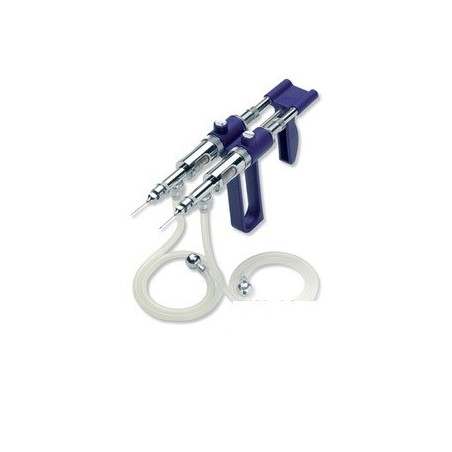Background
Several strategies to manage PRRSv infections in breeding herds have been described (Corzo et al. 2010). Herd closure and/or whole-herd exposure to PRRSv are methods commonly used in North America.

For the purpose of this study, herd closure was defined as temporary interruption of replacement pig introduction into the breeding herd for several weeks and whole-herd exposure is defined as exposing a PRRS immunogen (commercial PRRSV vaccine or live-virus inoculation) to all breeding age females in the herd.
The combined use of herd closure and whole-herd exposure is often called load-close-expose (LCE): load the breeding herd (in site or off site) with extra gilts ⇒ expose all sows and gilts to PRRSv ⇒ introduce unexposed gilts when breeding herd starts producing PRRSv-negative pigs at weaning.
The purpose of this study was to compare efficacy of LCE using modified-live (aka attenuated) PRRSV to that using live-virus exposure (aka serum inoculation) on breeding herds acutely infected with PRRSv.
Study design
We conducted a prospective field study with 61 breeding herds recently infected with PRRSV (within 60 days of virus detection) adopting LCE as method to produce PRRSv-negative pigs at weaning.
Three outcomes were developed measure "efficacy": time to stability (TTS= number of weeks it took to reach 4 consecutive PCR-negative results on monthly monitoring of 30 due to wean piglets); time to baseline production (TTBP = time to recover volume of weaned pigs/week that herd had in the 21 weeks prior to PRRS outbreak as defined by exponential weighted moving average methods); total loss (sum of pigs not weaned following intervention, until reaching TTBP).
We compared TTS, TTBP and total loss between herds using LCE with modified live vaccine (LCE with MLV, n=20 herds) to those using LCE with live-virus inoculation (LCE with LVI, n=41 herds). We also collected demographic information and history of PRRSv infection for risk factor analyses. Survival analysis and regression models were used to compare the outcomes between treatment groups.
Results and Discussion
We found that 77% of herds reached TTS by end of the observational period. The average TTS for all herds was 26.6 weeks, ranging from 12 to 42 weeks. Herds reached TTS significantly sooner if used LVI as exposure method (25 weeks for LVI, 32 for MLV herds), if they had history of PRRSV infection within the previous 3 years or if they were part of a particular production system. Conversely, the production impact was significantly less severe in herds using MLV as part of the LCE program. More specifically, MLV herds reached TTBP 7 weeks sooner and lost 1,300 less pigs than those using LVI. Economic analysis taking into account all outcomes indicated MLV was advantageous over LVI.
In summary, results showed that when TTS is the only desired outcome, using LVI as part of a load-close-expose program was the economically advantageous over the LCE+MLV strategy. This may be the case of genetic multiplier herds. However, when productivity was an outcome of interest, the LCE+MLV was the strategy that resulted in less losses. There were “early TTS herds” in both groups (LCE+LVI and LCE+MLV), which proves the concept that early TTS is possible using both strategies. Further field research is needed to identify underlying causes associated with shorter TTS. Another key parameter that veterinarians use to select the strategy to manage PRRS infection is the success rate to achieve the desired outcome (TTS or TTBP for instance). In this study, there were no statistical difference between treatment groups in the success rate to achieve TTS or TTBP.
Another key finding of the study was the intermittent pattern of PRRSv detection by PCR. Forty percent of herds had at least one monthly negative test followed up by a positive test in the following month. This finding supports that PRRSv monitoring should be done repeatedly over time as the virus can sustain low (but not zero) prevalence for a few months before infection dies out in the population level. We are currently conducting field studies to assess efficacy of different surveillance methods to detect PRRS infection at near zero prevalence with high confidence. Results will be available at the pig 333 portal.

Acknowledgements
The full peer reviewed manuscript was published in the Preventive Veterinary Medicine Journal by authors Daniel Linhares, Jean Paul Cano, Montserrat Torremorell and Bob Morrison in 2014.









